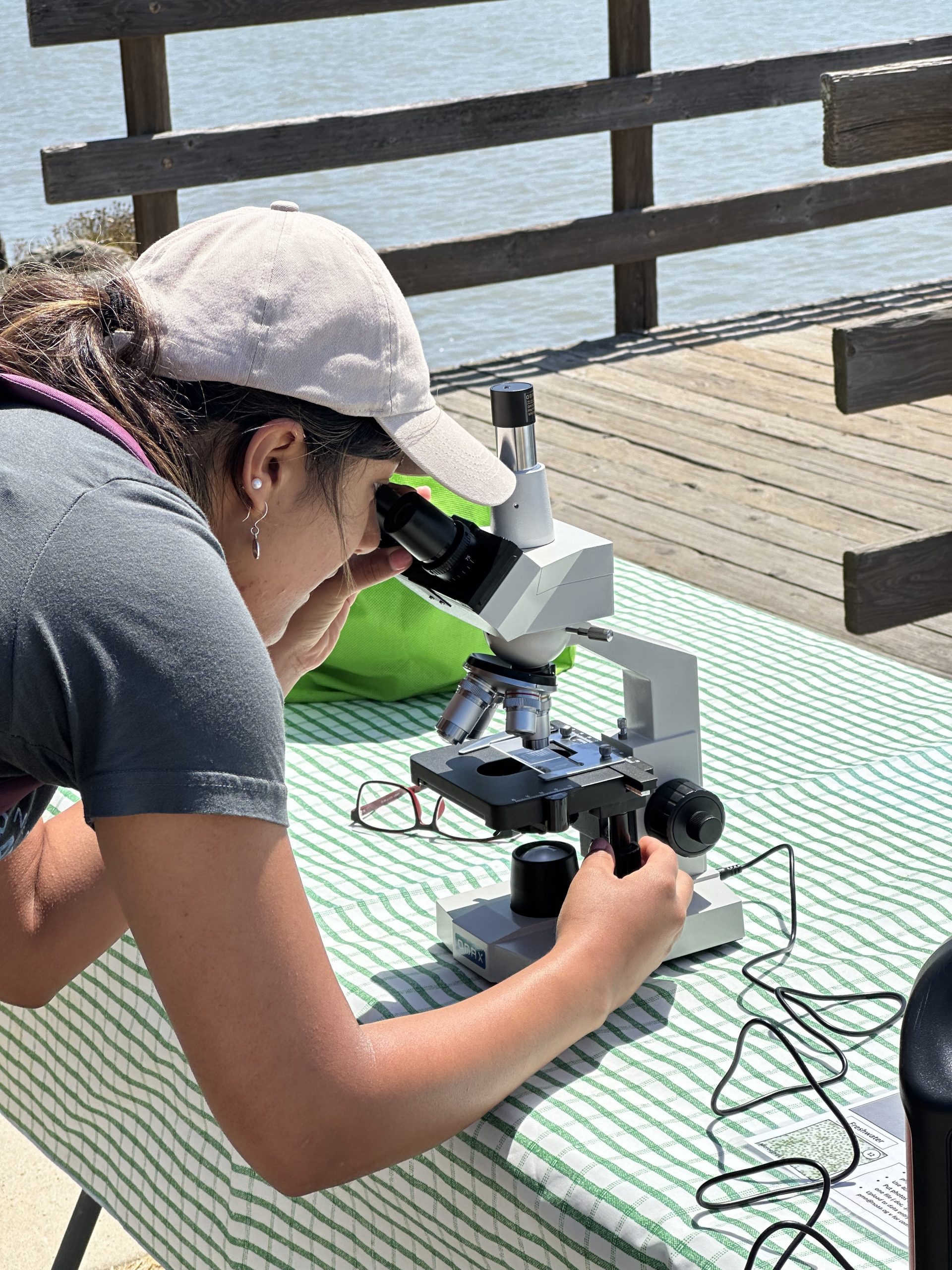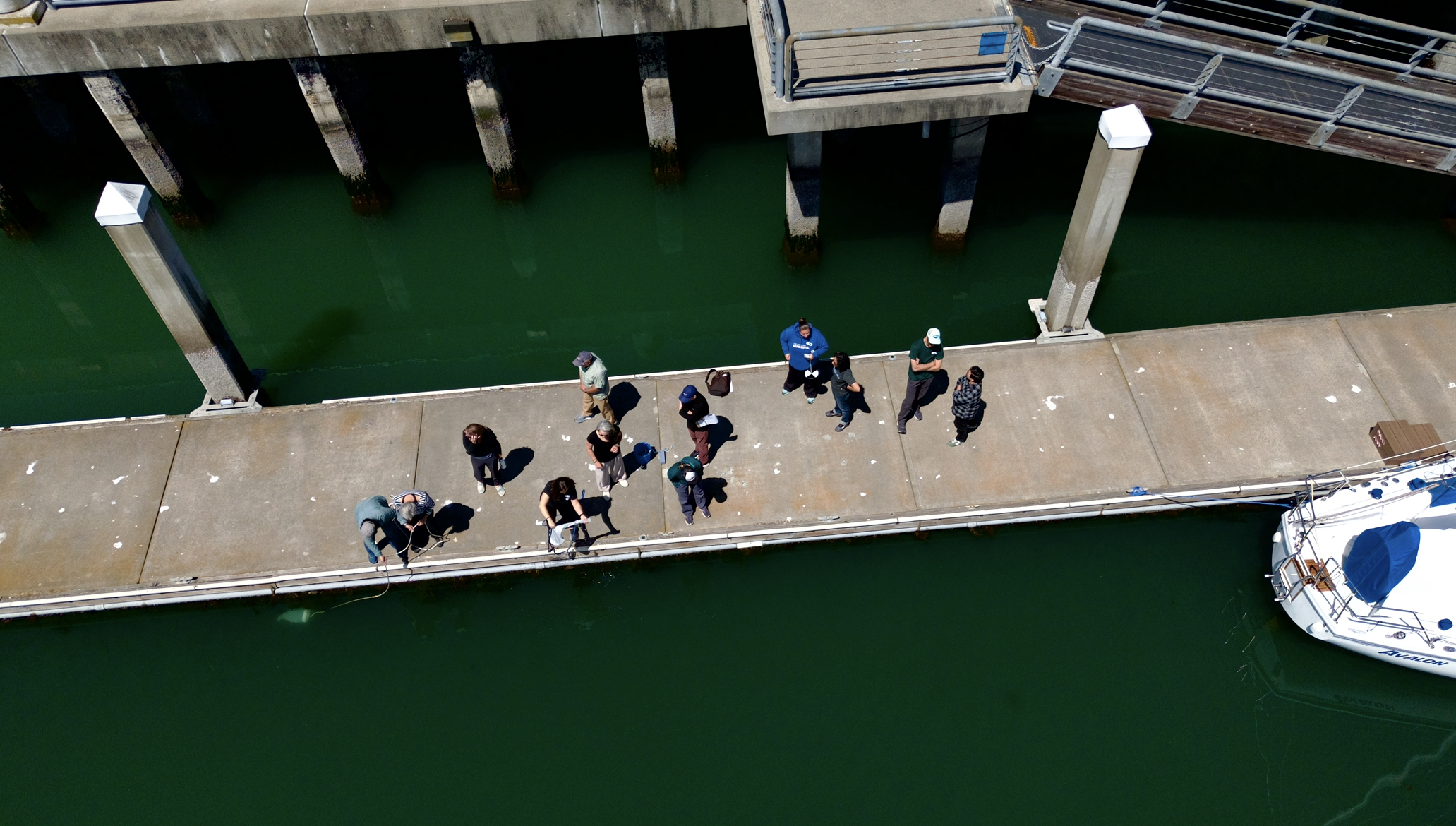
San Francisco Baykeeper plans to re-engage community volunteers this month with training provided by NOAA’s Phytoplankton Monitoring Network (PMN), operated by NCCOS, as a second season of harmful algal blooms (HABs) surveillance along shorelines and in marinas gets underway. The effort is one component of an NCCOS Monitoring and Event Response for Harmful Algal Blooms (MERHAB) project that is developing an integrated system-wide HAB monitoring program for the San Francisco Estuary.
Over the last decade, HABs have emerged as one of the highest-priority water quality management issues in the San Francisco Estuary, which includes the San Francisco Bay and Sacramento–San Joaquin River Delta. However, there is currently no sustained, coordinated HAB program covering the entire estuary.
Baykeeper volunteers are best suited to analyze water samples collected in the shallows along the shoreline and off docks, nearshore areas that can be incubators (or hotspots) for bloom-forming harmful algae species. Last year, working with MERHAB partners, including NOAA’s PMN, several possible hotspots were identified in the Central and South Bay regions, and a group of volunteers were provided initial training on established NOAA protocols in phytoplankton identification, data entry, and validation.
This year Baykeeper and NOAA PMN will kick off the 2025 summer monitoring season by welcoming returning and new volunteers to a workshop at the San Francisco Estuary Institute (SFEI). New and returning volunteers will have the opportunity to learn and expand their skills in microscopy and photographic techniques, phytoplankton identification, and practice field sampling protocols. Volunteer sampling will help alert the research team and the California Department of Health to potential HAB threats throughout the summer.

San Francisco Baykeeper and its MERHAB partners — SFEI, USGS California Water Science Center, and California Department of Water Resources — are continuing a multi-year effort to combine community science monitoring with data from remote sensing, continuous water quality sensors, and molecular DNA-based detection methods. All data streams are also being integrated into an estuary-wide HAB dashboard that will aid in tracking water quality changes. The project will ultimately support efforts to manage nutrients to reduce the potential for future HAB events and address related water quality impairments in the San Francisco Estuary.
The workshop and related MERHAB project are authorized by the Harmful Algal Bloom and Hypoxia Research and Control Act (33 U.S.C. §§ 4001 et seq.) and the NOAA Authorization Act of 1992, Pub. L. 102-567 (Oct. 29, 1992); sec. 201(c), which directs appropriation for the NCCOS Competitive Research Program to augment and integrate existing NOAA programs, with a specific focus on improving predictions of coastal hazards and protecting human life and property.

